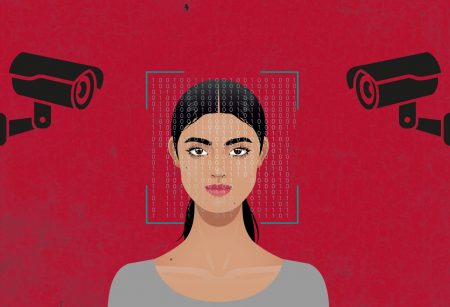Automated Facial Recognition System to Identify Criminals 11/07/2019 – Posted in: Daily News
AUTOMATED FACIAL RECOGNITION SYSTEM TO IDENTIFY CRIMINALS
For: Preliminary & Mains
Topics covered: Automated Facial Recognition System – Significance & Benefits, Criminal Tracking Network & Systems, National Crime Records Bureau
News Flash
The National Crime Records Bureau released a Request for an Automated Facial Recognition System (AFRS).
- AFRS is to be used by police officers to identify criminals, missing people, and unidentified dead bodies.
- It can also be used for “crime prevention” across the nation.
- The new facial recognition system will also be integrated with the Integrated Criminal Justice System (ICJS).
- It will also be integrated with state-specific systems, the Immigration, Visa and Foreigners Registration & Tracking (IVFRT).
- It will also link with the Koya Paya portal on missing children.
Automated Facial Recognition
- AFRS works by maintaining a large database with photos and videos of peoples’ faces.
- Then, a new image of an unidentified person (often taken from CCTV footage) is compared to the existing database to identify the person.
- The artificial intelligence technology used for pattern-finding and matching is called “neural networks”.
- It is a new idea for the country. Currently, facial recognition in India is done manually.
Advantages
- Fingerprints and iris scans provide far more accurate matching results, automatic facial recognition is an easier solution especially for identification amongst crowds.
- It can play a very vital role in improving outcomes in the area of Criminal identification and verification.
- It can help in facilitating easy recording, analysis, retrieval and sharing of Information between different organisations.
- Integration of fingerprint database, face recognition software and iris scans will massively boost the police department’s crime investigation capabilities.
How will the new database fit in what already exists?
- NCRB has proposed integrating this facial recognition system with multiple existing databases.
- The most prominent is the NCRB-managed Crime and Criminal Tracking Network & Systems (CCTNS).
- Facial recognition has been proposed in the CCTNS program since its origin.
Criminal Tracking Network & Systems (CCTNS)
- In 2009, CCTNS was envisaged as a countrywide integrated database on crime incidents and suspects.
- It connected FIR registrations, investigations, and chargesheets of all 15,500 police stations and 6,000 higher offices.
- It also plans to offer citizen services.
- Citizen services such as passport verification, crime reporting, online tracking of case progress, grievance reporting against police officers, and more.
- CCTNS is accessible to the CBI, Intelligence Bureau, National Investigation Agency, Enforcement Directorate, and the Narcotics Control Bureau.
National Crime Records Bureau
- NCRB was set-up in 1986 to function as a repository of information on crime and criminals.
- NCRB has to assist the investigators in linking crime to the perpetrators.
- It was set-up on the recommendations of the National Police Commission (1977-1981) and the MHA’s Taskforce (1985).
- NCRB developed Integrated Investigation Forms (IIF) in 1989-93.
- It implemented the Crime and Criminal Information System (CCIS) during the years 1995-2004.
- NCRB has responsibility for monitoring, coordinating and implementing the Crime and Criminal Tracking Network & Systems project in the year 2009.
Source: Indian Express
You can follow us on LinkedIn and for more updates related to UPSC IAS Preparation, Like our Facebook Page and subscribe our Diligent IAS Youtube Channel
Also, Read Related Daily News
- Gujarat Disturbed Area Act (Amendment) Bill, 2019
- Utkarsh-2022
- Drugs and Cosmetic Rules, 1945
- Kui Tribals in Odisha

